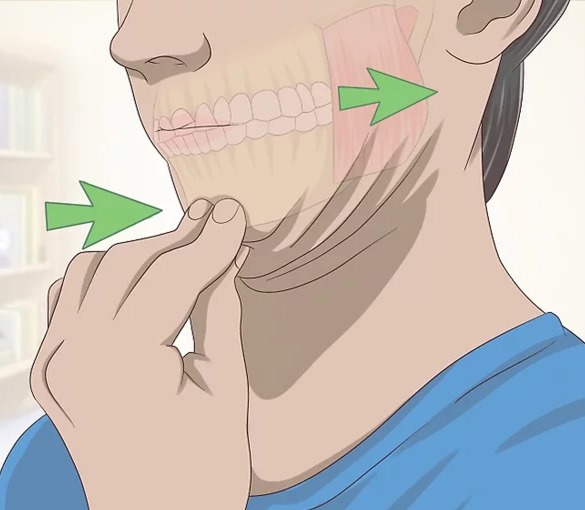Temporomandibular Joint
TMJ is an acronym that stands for temporomandibular joint. Your TMJs are located on both sides of your face, just in front of your ears. The TMJs connect your lower jawbone to your skull and assist in movements like chewing and speaking.

Causes of TMJ pain
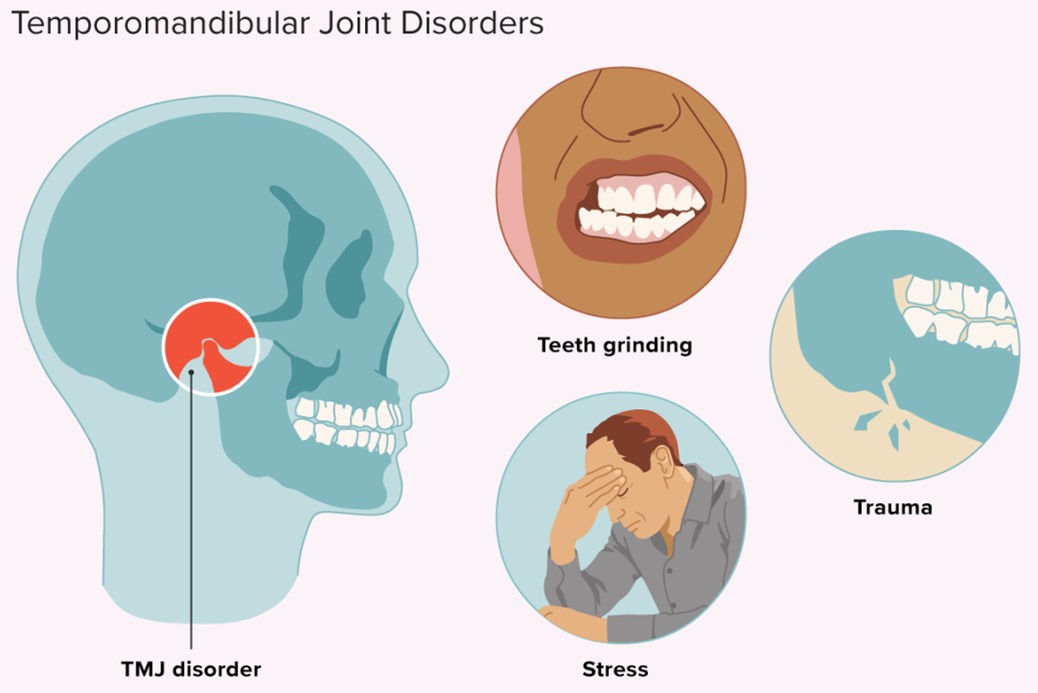
There are many potential causes of TMJ pain, including:
Stress and anxiety can lead to clenching or grinding the teeth, putting strain on the TMJ and causing pain.
Arthritis is a common cause of jaw pain. It can cause the joints to become inflamed, resulting in pain and stiffness.
Bruxism is a condition that involves clenching or grinding the teeth. This can put stress on the TMJ and lead to pain.
The TMJ can become restricted or dislocated when the jaw is moved out of alignment. This can happen due to trauma or a misalignment of the teeth.
An infection in the TMJ can cause inflammation and pain.
Symptoms
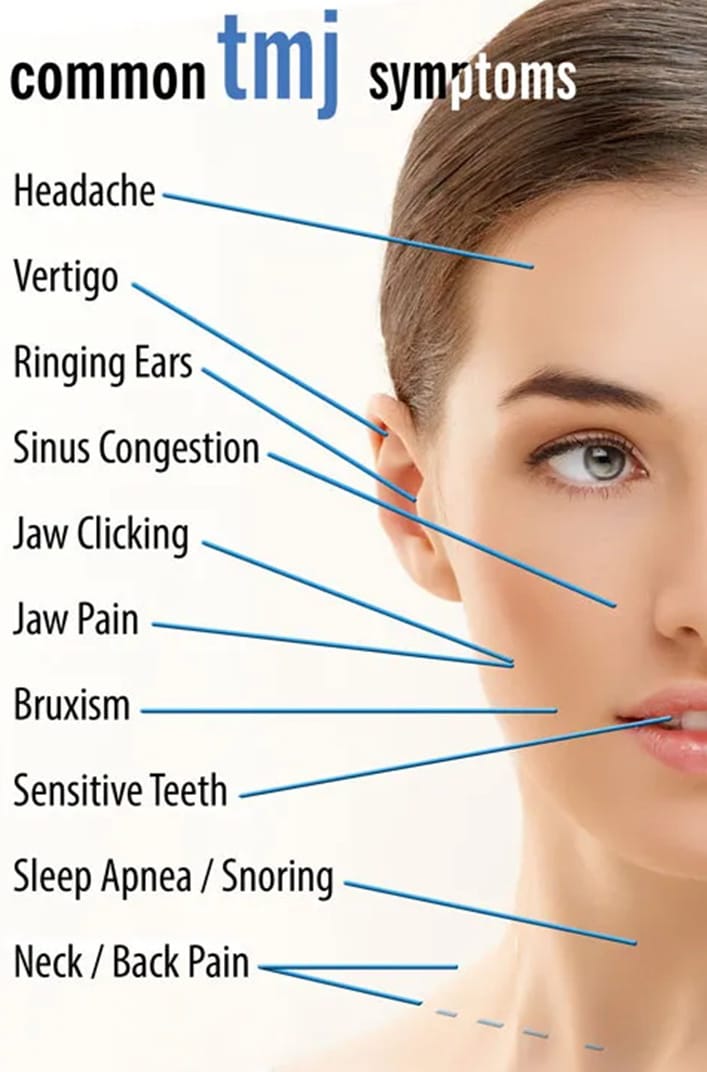
Treatment
• For a new injury, place an ice pack on the area for 10 min a few times per day.
• Use a heat pack for older injuries
• Rest the jaw as much as possible
• Get Chiropractic treatment as soon as possible
What can YOU do?
• Stop chewing gum, and hard foods like biltong.
• Keep your teeth slightly apart as often as you can, this is called the resting position. This will relieve the pressure on your jaw. Put your tongue between your teeth to control clenching or grinding during the day. As you go off to sleep try to consciously relax your jaw and don't clench your teeth shut. Ask your dentist about wearing a mouth guard.
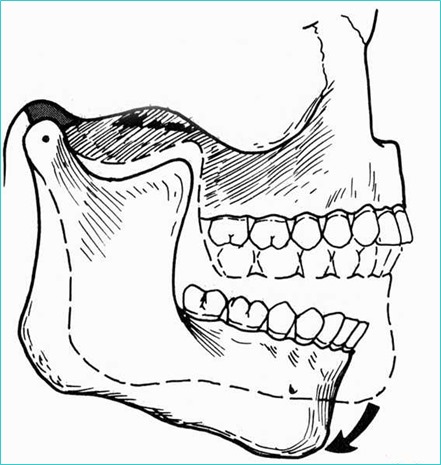
• Massage the muscles around your jaw and temples. To relax the muscle tension.
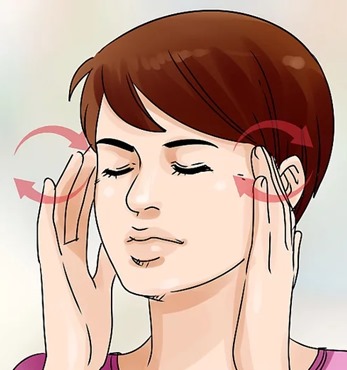
• Maintain good neck and back posture.
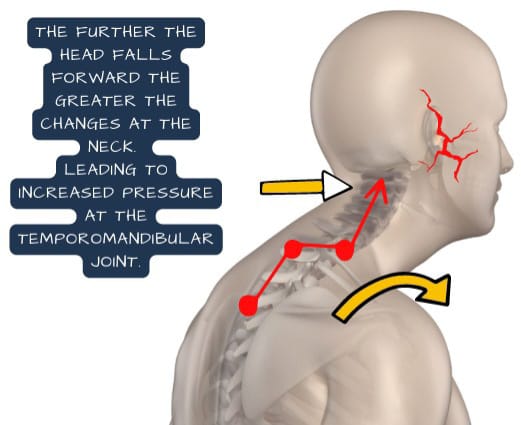
• Sleep on a good supportive orthopaedic pillow.
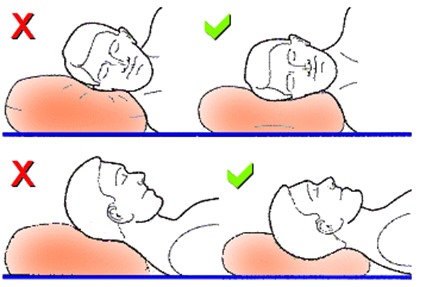
• Avoid tummy or back sleeping.
• Reduce stress by practicing yoga, meditation, and mindful breathing all promote a sense of calm.
• Taking a warm shower or bath before going to bed each night relaxes the body and mind for more restful sleep. It also decreases the amount or severity of grinding and clenching while sleeping.
• Exercise your jaw daily.
Exercises
Open and close your jaw. While holding your tongue on the roof of your mouth just behind your front teeth. Drop your jaw, allowing the muscles to relax. No need to hold this open position, simply repeat this exercise six times per session, six sessions a day.

Try “goldfish exercises.” to release tightness. Place two fingers on your TMJ joint (you can localize it by where you feel the most discomfort at the hinge of your jaw near your ear.) Then, place one finger from your other hand on your chin. Drop your mouth open, while applying light pressure against the TMJ. Repeat this exercise six times per session, six sessions per day.
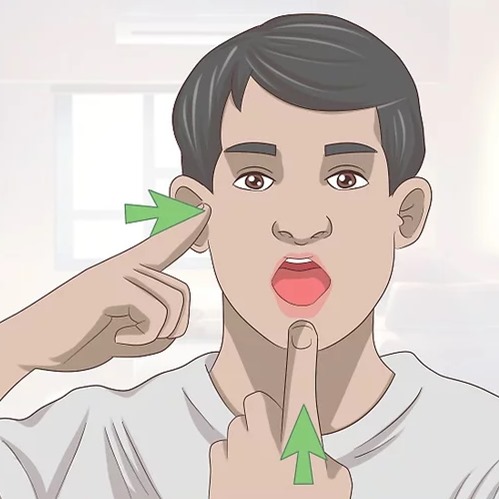
Don’t apply resistance to your chin. This exercise is to relax the jaw. Practice breathing in slowly through your nose for five seconds, while releasing the tension in your jaw completely. When you breathe out, also for five seconds, really concentrating on slackening each muscle you use to chew. You can perform this exercise as often as you like.
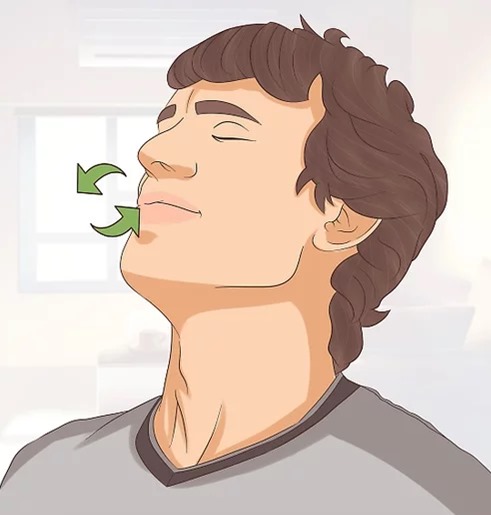
Exercises to increase your jaw mobility:
Place a chopstick, between your teeth so that it is sticking out in front of you. Now, shift your bottom jaw forward to try to point the object towards the ceiling. When you master one object comfortably, gradually increase the thickness to give you greater range of motion.
Select an object that is made to go in the mouth
other objects may damage your teeth.
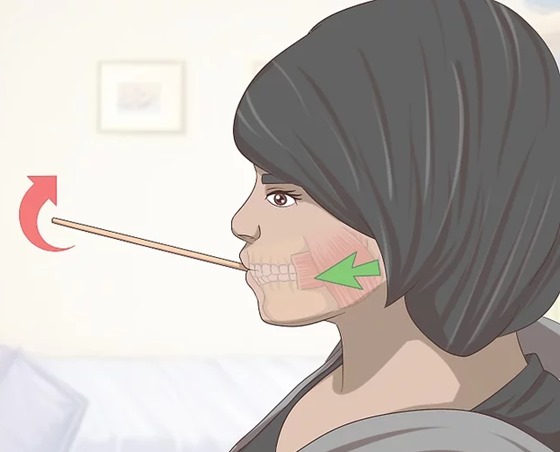
Place an item between your teeth to exercise your jaw side to side. Place your chopstick between your top and bottom teeth again, but this time, place it horizontally. Move your bottom teeth from side to side rather than up and down. This will help increase your lateral jaw mobility.
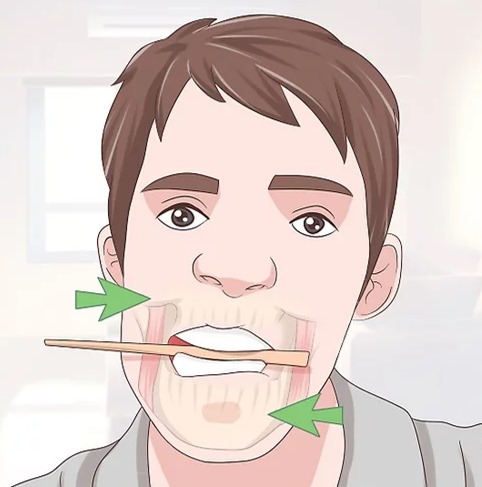
Strengthening exercises:
Apply resistance while opening your mouth. Place two fingers under your chin and press gently, applying a little resistance, while opening your mouth. Perform this exercise six times per session, six sessions per day.
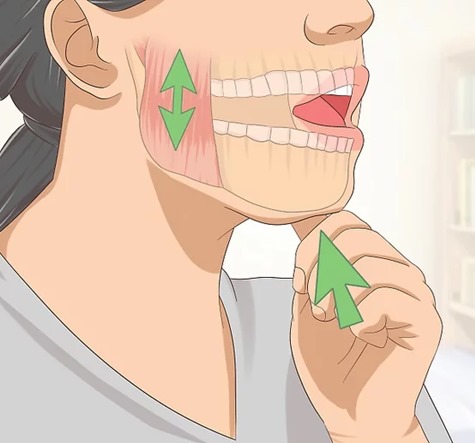
Apply resistance while closing your mouth. Open your mouth, and place two fingers under your bottom lip. Press gently, applying a little downward resistance, while closing your mouth. Perform this exercise six times per session, six sessions per day.

Perform chin tucks. With good posture, pull your chin straight back towards your chest, as if trying to make a double chin. Hold this chin tucked position for three seconds. This helps build the muscles surrounding your TMJ, taking some pressure off the joint. Repeat this exercise 10 times per day.
